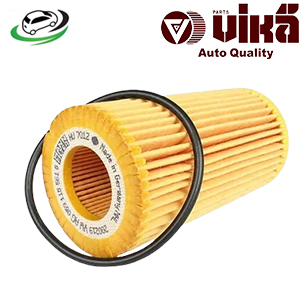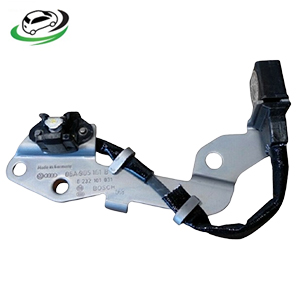-9%
Get Engine Camshaft Position Sensor VW Beetle 2.0L/ Beetle Convertible 2.0L/ Golf 2.0L/ GTI 2.0L / Jetta 2.0L/ Jetta Wagon 2.0L 06A905161B
The engine camshaft position sensor (CPS) is a critical component of an internal combustion engine’s electronic control system. It monitors the position and speed of the camshaft and sends this information to the engine control unit (ECU), which uses the data to optimize ignition timing and fuel injection. Proper functioning of the camshaft position sensor is essential for efficient engine operation, as it directly influences the timing and synchronization of the engine’s various processes. In this guide, we’ll explore the function, construction, types, benefits, symptoms of failure, diagnosis, and maintenance of the camshaft position sensor in detail.
Function of the Camshaft Position Sensor
The camshaft position sensor plays several crucial roles in the engine’s operation:
- Monitoring Camshaft Position:
- Primary Function: The camshaft position sensor monitors the position of the camshaft in relation to the crankshaft. This data is crucial for determining the exact timing of the opening and closing of the engine’s intake and exhaust valves.
- Synchronization: The sensor ensures that the camshaft and crankshaft are properly synchronized, which is essential for the engine’s timing and overall performance.
- Optimizing Ignition Timing:
- Ignition Control: The sensor’s data helps the ECU determine the best time to ignite the air-fuel mixture in the combustion chamber. Accurate ignition timing is vital for efficient engine performance and fuel economy.
- Spark Timing: By knowing the camshaft’s position, the ECU can control the spark plug firing sequence to match the engine’s operating conditions.
- Fuel Injection Timing:
- Fuel Delivery: The sensor also plays a critical role in controlling the timing of fuel injection. The ECU uses the camshaft position data to determine the precise moment to inject fuel into the cylinders for optimal combustion.
- Improved Efficiency: Proper fuel injection timing leads to better fuel efficiency, lower emissions, and smoother engine operation.
- Enabling Sequential Fuel Injection:
- Cylinder Identification: The camshaft position sensor allows the ECU to identify which cylinder is on the power stroke, enabling sequential fuel injection. This method of fuel injection is more efficient than batch firing and reduces fuel consumption.
- Supporting Variable Valve Timing (VVT):
- VVT Systems: In engines equipped with VVT, the camshaft position sensor is critical for adjusting the timing of the intake and exhaust valves. This adjustment improves engine performance, fuel efficiency, and emissions control across different RPM ranges.
Construction of the Camshaft Position Sensor
The camshaft position sensor is a relatively small but sophisticated electronic device, consisting of several key components:
- Sensor Housing:
- Material: Typically made of durable plastic or metal to protect the internal components from heat, vibration, and other environmental factors.
- Function: The housing encases the sensor’s internal components, providing structural support and protection.
- Sensing Element:
- Type: Depending on the sensor type, the sensing element could be a magnetic coil, Hall effect element, or optical sensor.
- Function: The sensing element detects changes in the camshaft’s position and converts this mechanical movement into an electrical signal that is sent to the ECU.
- Trigger Wheel (Reluctor):
- Material: Usually made of metal, this wheel is attached to the camshaft and rotates with it.
- Function: The trigger wheel has teeth or notches that pass by the sensing element, creating a signal each time a tooth or notch aligns with the sensor.
- Magnet (in Magnetic Sensors):
- Material: Often made of rare-earth metals like neodymium.
- Function: In magnetic sensors, the magnet creates a magnetic field that interacts with the sensor’s coil, generating a voltage signal as the trigger wheel passes by.
- Electrical Connector:
- Material: Plastic or metal with conductive pins.
- Function: The connector links the sensor to the vehicle’s wiring harness, allowing the sensor to send signals to the ECU.
Types of Camshaft Position Sensors
There are several types of camshaft position sensors, each using a different method to detect the camshaft’s position:
- Magnetic (Inductive) Sensors:
- How It Works: Magnetic sensors use a coil and a magnet to generate a voltage signal as the camshaft’s reluctor wheel passes by.
- Common Use: These are often found in older vehicles. They are robust and reliable but can be affected by electromagnetic interference.
- Hall Effect Sensors:
- How It Works: Hall effect sensors use a semiconductor to detect changes in a magnetic field as the camshaft’s reluctor wheel passes by. The sensor produces a digital signal (on/off) that corresponds to the camshaft’s position.
- Common Use: Hall effect sensors are widely used in modern vehicles due to their accuracy and resistance to interference.
- Optical Sensors:
- How It Works: Optical sensors use a light-emitting diode (LED) and a photodetector. The camshaft’s trigger wheel has slots that allow or block the light beam, creating a signal as the camshaft rotates.
- Common Use: Optical sensors are less common in automotive applications due to their sensitivity to dirt and oil, but they offer high precision in detecting position.
Benefits of a Properly Functioning Camshaft Position Sensor
A properly functioning camshaft position sensor provides several benefits:
- Improved Engine Performance:
- Precise Timing: Accurate data from the camshaft position sensor allows the ECU to optimize ignition and fuel injection timing, leading to better engine performance.
- Smoother Operation: With correct timing, the engine runs more smoothly, with reduced vibrations and noise.
- Enhanced Fuel Efficiency:
- Optimized Fuel Injection: By ensuring precise fuel injection timing, the camshaft position sensor helps the engine burn fuel more efficiently, leading to improved fuel economy.
- Reduced Emissions: Proper fuel combustion also reduces harmful emissions, contributing to a cleaner environment.
- Reliable Engine Starts:
- Quick Start: The sensor provides critical information to the ECU that ensures the engine starts reliably, even in cold or challenging conditions.
- Avoiding Misfires: By synchronizing the camshaft and crankshaft positions, the sensor helps prevent engine misfires during startup.
- Support for Advanced Engine Technologies:
- Variable Valve Timing: In engines with VVT systems, the camshaft position sensor is essential for adjusting valve timing based on engine load and speed, leading to enhanced power and efficiency.
Symptoms of a Failing Camshaft Position Sensor
When the camshaft position sensor begins to fail, it can cause various engine performance issues:
- Check Engine Light (CEL) Illumination:
- Cause: A malfunctioning camshaft position sensor often triggers the CEL. The ECU will store a trouble code indicating an issue with the sensor.
- Action: A diagnostic scan will reveal the specific error code, helping to identify the sensor as the problem.
- Engine Misfires or Stalling:
- Cause: Inaccurate or intermittent signals from the sensor can lead to improper fuel injection and ignition timing, causing the engine to misfire or stall.
- Symptoms: The vehicle may run rough, hesitate, or stall, especially when idling.
- Poor Acceleration:
- Cause: Without accurate data from the camshaft position sensor, the ECU may not optimize the engine’s timing, resulting in sluggish acceleration.
- Symptoms: The vehicle may feel underpowered or slow to respond when you press the accelerator.
- Hard Starting or No Start:
- Cause: A completely failed sensor can prevent the ECU from determining the camshaft’s position, leading to difficulty starting the engine or preventing it from starting at all.
- Symptoms: The engine may crank but not start, or it may take longer than usual to start.
- Reduced Fuel Efficiency:
- Cause: Incorrect timing due to a faulty sensor can lead to inefficient fuel combustion, increasing fuel consumption.
- Symptoms: You may notice a decrease in miles per gallon (MPG) and more frequent trips to the gas station.
Diagnosing a Camshaft Position Sensor Issue
Diagnosing a faulty camshaft position sensor typically involves the following steps:
- Diagnostic Scan:
- OBD-II Scanner: Use an OBD-II scanner to check for any stored trouble codes related to the camshaft position sensor (e.g., P0340, P0341).
- Code Interpretation: Codes like P0340 indicate a malfunction in the camshaft position sensor circuit, helping pinpoint the issue.
- Visual Inspection:
- Check Wiring: Inspect the sensor’s wiring harness for any signs of damage, corrosion, or loose connections.
- Sensor Condition: Visually examine the sensor for signs of wear, oil contamination, or physical damage.
- Sensor Testing:
- Multimeter Test: Use a multimeter to check the sensor’s resistance and output voltage. Compare the readings with the manufacturer’s specifications to determine if the sensor is functioning correctly.
- Oscilloscope Test: An oscilloscope can provide a more detailed analysis of the sensor’s output signal, showing whether it is producing the correct waveform.
- Physical Replacement:
- Replacement: If the sensor is determined to be faulty, replacing it with a new one is usually straightforward and involves removing the old sensor and installing the new one.
Maintenance of the Camshaft Position Sensor
Maintaining the camshaft position sensor involves regular checks and proper care:
- Regular Inspections:
- Scheduled Maintenance: Include the sensor in your vehicle’s regular maintenance checks, especially if you notice any symptoms of failure.
- Cleanliness: Keep the sensor and its surrounding area clean to prevent contamination that could interfere with its operation.
- Addressing CEL Promptly:
- Immediate Attention: If the check engine light comes on and diagnostic codes point to the camshaft position sensor, address the issue immediately to avoid further engine damage.
- Replacing When Necessary:
- Timely Replacement: If the sensor shows signs of wear or failure, replace it promptly. Sensors are relatively inexpensive compared to the potential cost of engine damage.
- Use Quality Parts:
- OEM Sensors: Use original equipment manufacturer (OEM) sensors or high-quality aftermarket parts to ensure reliable performance and compatibility with your vehicle.
Follow us on Facebook for more parts.



